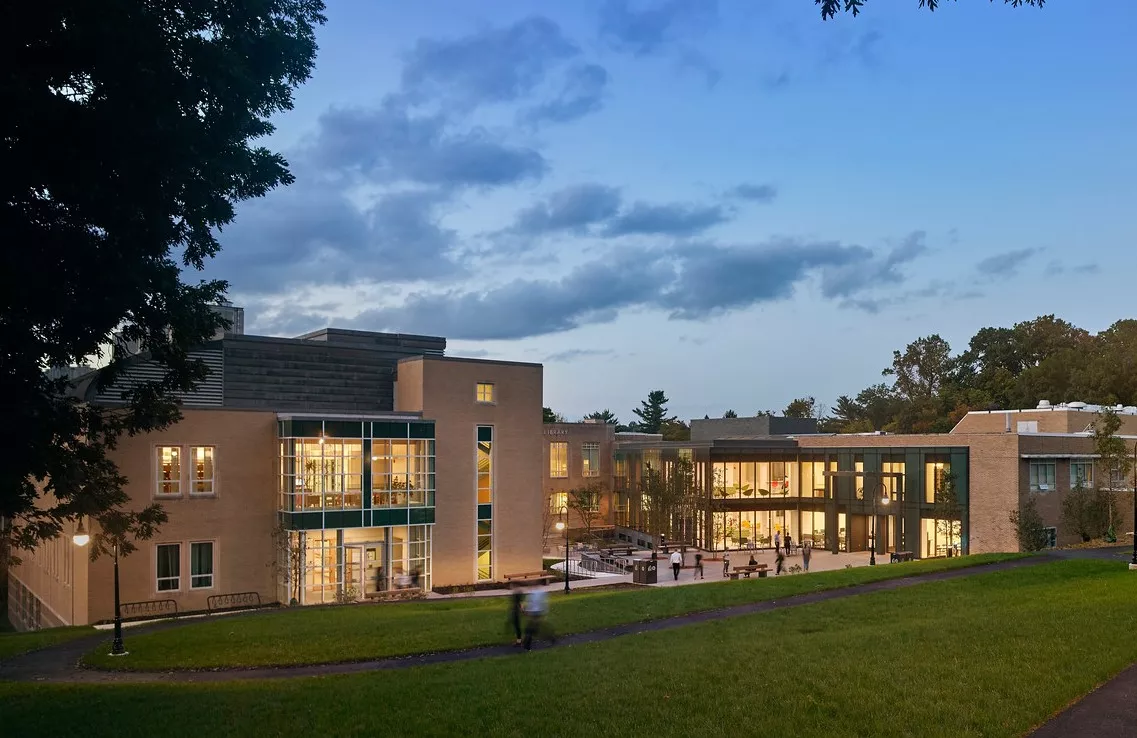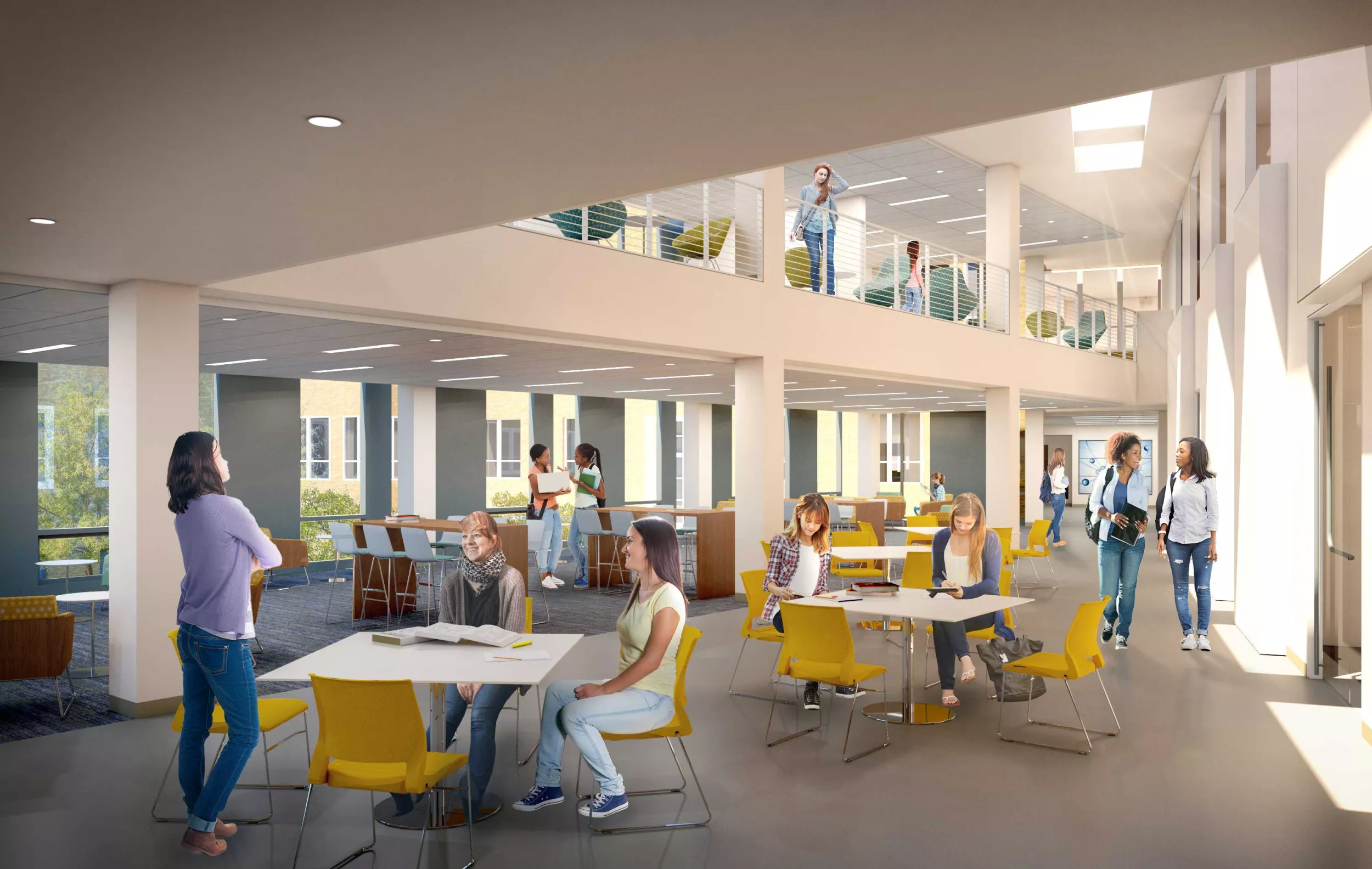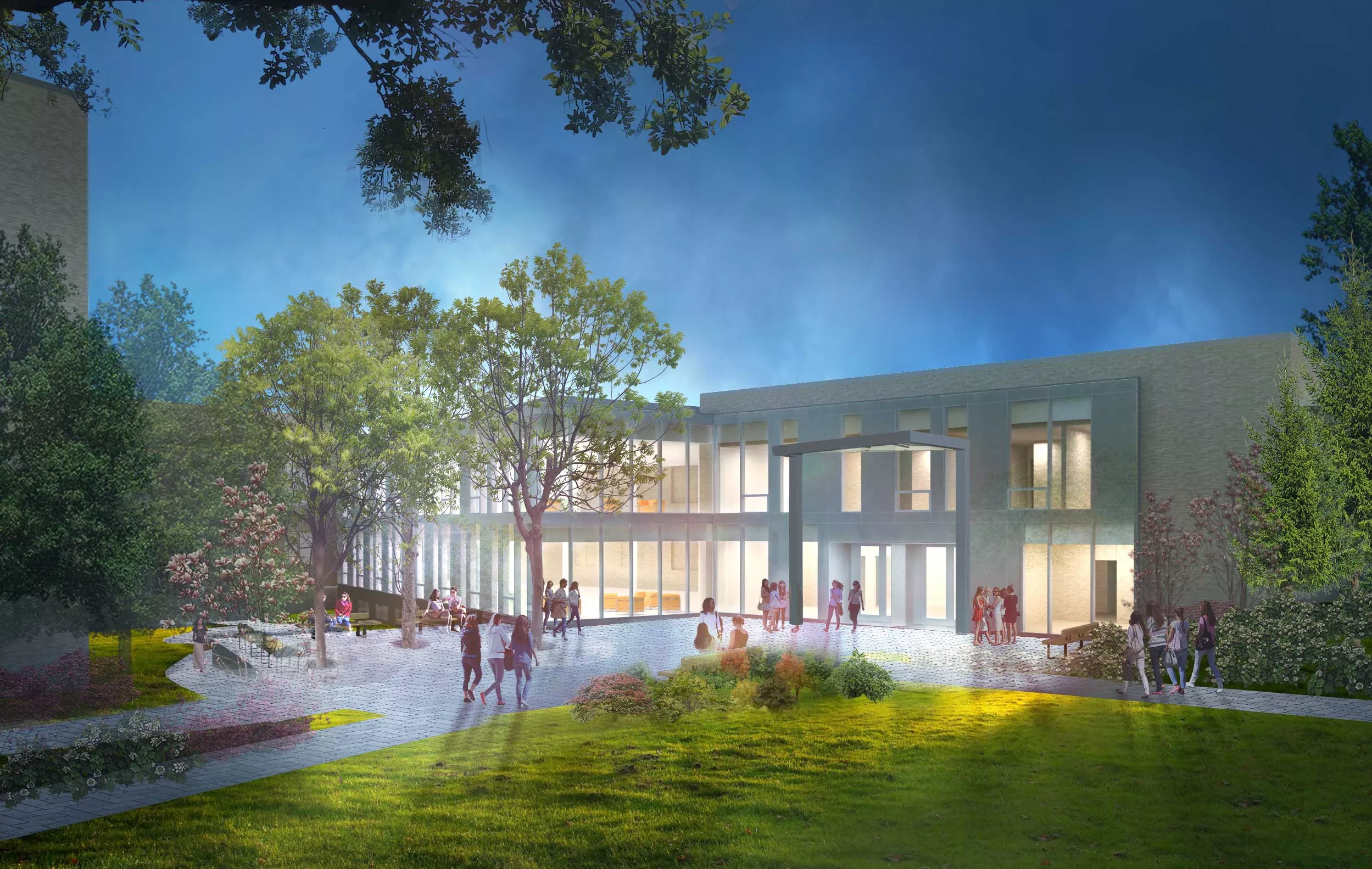
The first phase of a major project that will reimagine and reinvigorate the Park Science Center is now underway.
The project will include a 10,000-square-foot addition and renovation of existing square footage to create new collaborative learning spaces, technology-rich classrooms, and student study areas. The project will also update classrooms, teaching and research labs, and the College’s science library.
Key elements of Phase I include:
- Modern Physics Laboratory: A new teaching laboratory located in the lower level of the new addition that includes all new equipment and small “roomettes” for conducting experiments under controlled conditions.
- Electronics Lab: A fully renovated electronics lab will be constructed in the existing building.
- The Commons: A two-story learning commons with a mezzanine. This space will provide areas for students to meet and collaborate in a variety of settings.
- The Lower Commons: A flexible learning area on the lower level that provides additional group study and faculty/student collaboration, with state of the art technology to support functions.
- Science Crossroads: An enhanced public space in the heart of the building. This space will facilitate science on display with state of the art technology and video display capability. The space will also serve to organize and enhance circulation and way-finding within the building.
- Study and Seminar Rooms: Nine study and seminar rooms equipped with technology, black boards, and whiteboards for students to study and collaborate.
- Renovated Classrooms and Lecture Halls: Seven classrooms and lecture halls will be upgraded with new finishes and updated technology.
- New Computer Science Teaching Laboratory and Offices: The new lab is larger with upgraded technology. This work has already been completed in existing space during a preconstruction phase to make way for the larger project.
The most outwardly prominent aspect of the $21-million project will be the glass-enclosed addition and entry plaza that will combine to change the character of the building. The existing courtyard at the main entrance will be redesigned—to provide a more intimate outdoor gathering and learning space—and will include a pollinator garden.
“Our number one priority is meeting the current and future needs of our faculty and students by providing a variety of collaborative learning environments including classroom and lab space,” says Director of Facilities Nina Bisbee. “We also want the building itself to be an inviting place that reflects the College’s strong commitment to STEM.”
The Park renovation is designed to LEED Silver Standards. Sustainable features of the project include:
- High efficiency LED lighting.
- New, high-efficiency heating, ventilation, and air conditioning (HVAC) equipment.
- State of the art HVAC and lighting control systems to manage and reduce energy use.
- Combination of transparent and opaque façade to allow for daylighting, while limiting solar gain.
- Rooftop rainwater harvesting to a cistern for use in the College’s limited landscape-watering program.
- Raingarden and infiltration of surface storm water to replenish ground water.
- Use of building materials with recycled content.
Phase I is expected to finish in fall 2018. Phase II, which will include the transformation of the science library, is expected to cost $19 million and is targeted to begin in 2019. The architect for the project is Payette Associates, Inc.
The Park Science Center is a collection of interconnected buildings that has been built over time. The complex began with the establishment of Park Hall constructed in 1938. Subsequent additions have paralleled growth in enrollment and followed a pattern of discipline-specific construction, including the biology wing in 1959, the physical sciences wing in 1964, and the last major addition, the chemistry wing, in 1993.
Follow the progress of the project online.
Bryn Mawr is recognized as a leader in STEM undergraduate education for women.
- From 2013-2015, 28 percent of the degrees awarded to students at Bryn Mawr were in STEM.
- Eleven percent of all degrees were awarded in math—nearly 15 times the national average.
- In 2018, almost five percent of Bryn Mawr students will major in Physics.
- At Bryn Mawr more than two thirds of students interested in STEM fields will declare STEM majors.
- Twelve percent of students came to Bryn Mawr interested in non-science majors but end up majoring in STEM.

